
The Dynamic, Savage and Bright Art of Rustam Iralin
Words by Eric David
Location
As a teenager, Russian artist Rustam Iralin excelled in art and hung out in museums admiring the Old Masters, yet it wasn’t until he reached his twenties that his artistic renaissance emerged. This is when, quite fittingly, he immersed himself in anatomy books, trying to improve his skills in drawing cartoon figures. Four years later, Iralin has evolved into a prolific artist whose paintings and drawings of human figures are characterized by an emotional intensity and a dream-like aesthetic.
The figures in Iralin’s work are often depicted in contemplation, posing with their backs to the viewer or their faces turned away, while possessing a robust physicality that complements their melancholic sensibility with bodily vigor. His impressionistic approach to oil painting—visible brushstrokes, the use of bright tones against dark tones and dissolving contours—and the unfinished realism in his drawings make the figures in his work appear almost dreamlike, which in fact they are as the artist explained to Yatzer when we interviewed him, since they are mostly figments of his imagination. For Iralin, each human body has a story to tell, and by fleshing out his imaginary figures he becomes a storyteller and the viewers his audience. It’s a process that, in his own words, enriches him with peace, letting him express how he feels about this world and the people who live in it.
(Answers have been edited for clarity.)
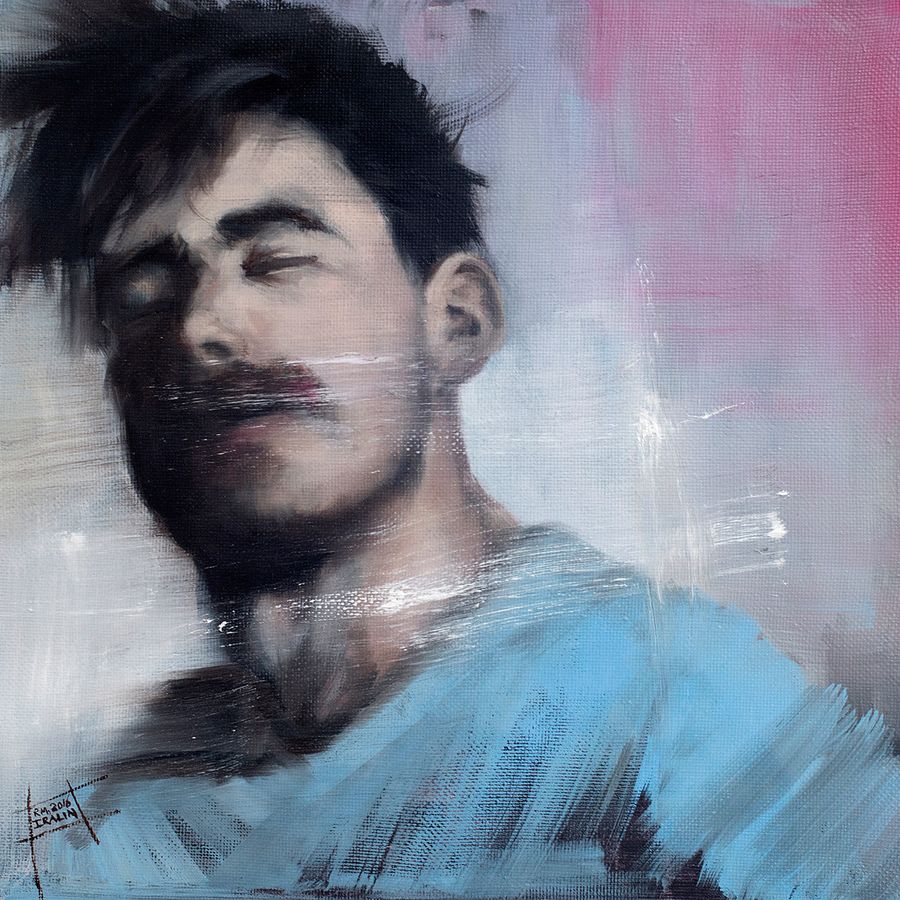
Rustam Iralin, The Daydreamer, 2016, 50x50cm, canvas, oil.
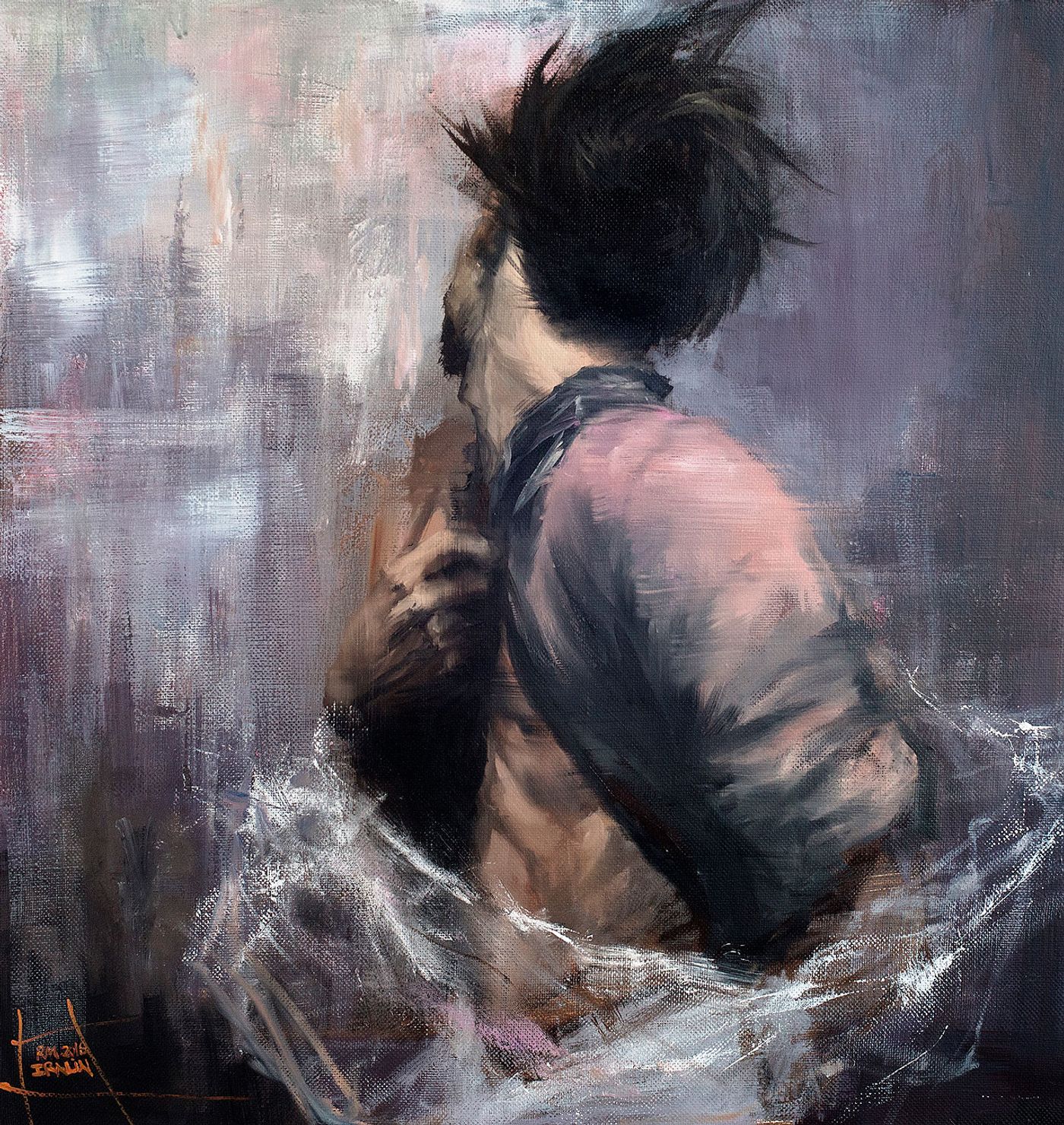
Rustam Iralin, The Slap, 2016, 80x80cm, canvas, oil.
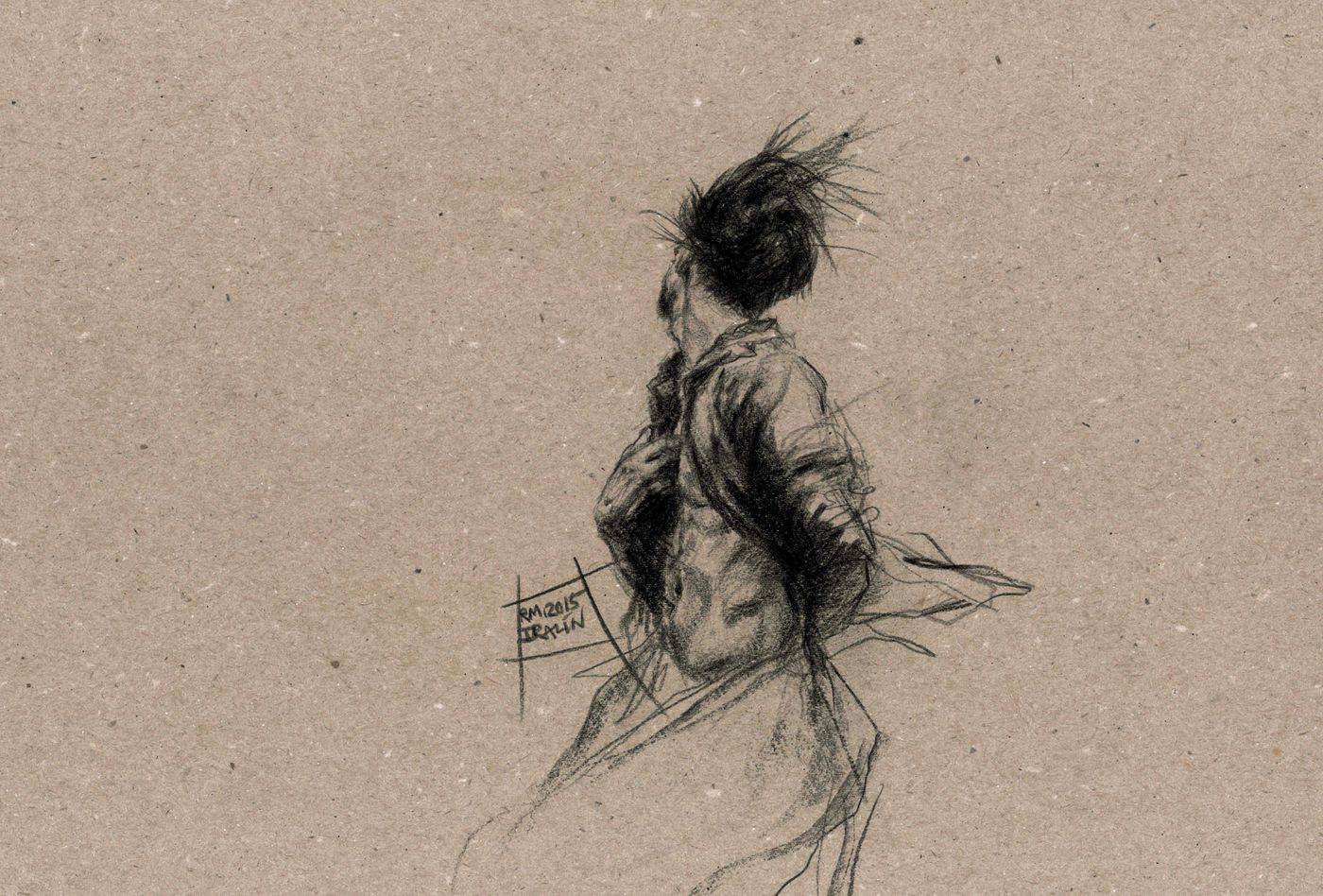
Rustam Iralin, Drama drawing 1, 2016, A4, pencil on craft paper, framed.
Your latest work revolves around figure painting and drawing. What is the appeal of the human body to you and what is the driving force behind your artistic creativity?
Each figure is unique and a storyteller. When drawing a human figure, a body, I feel almost privileged in that I can correct their story or build one from scratch like a sculptor. The model could be the worst person in the world but he/she has a body that could tell a different story from the one inside, and I help it grow.
The driving force in my drawings or paintings is dynamism. It brings life to a subject and makes you read the emotional background. Academic sit-down-poses are not for me.
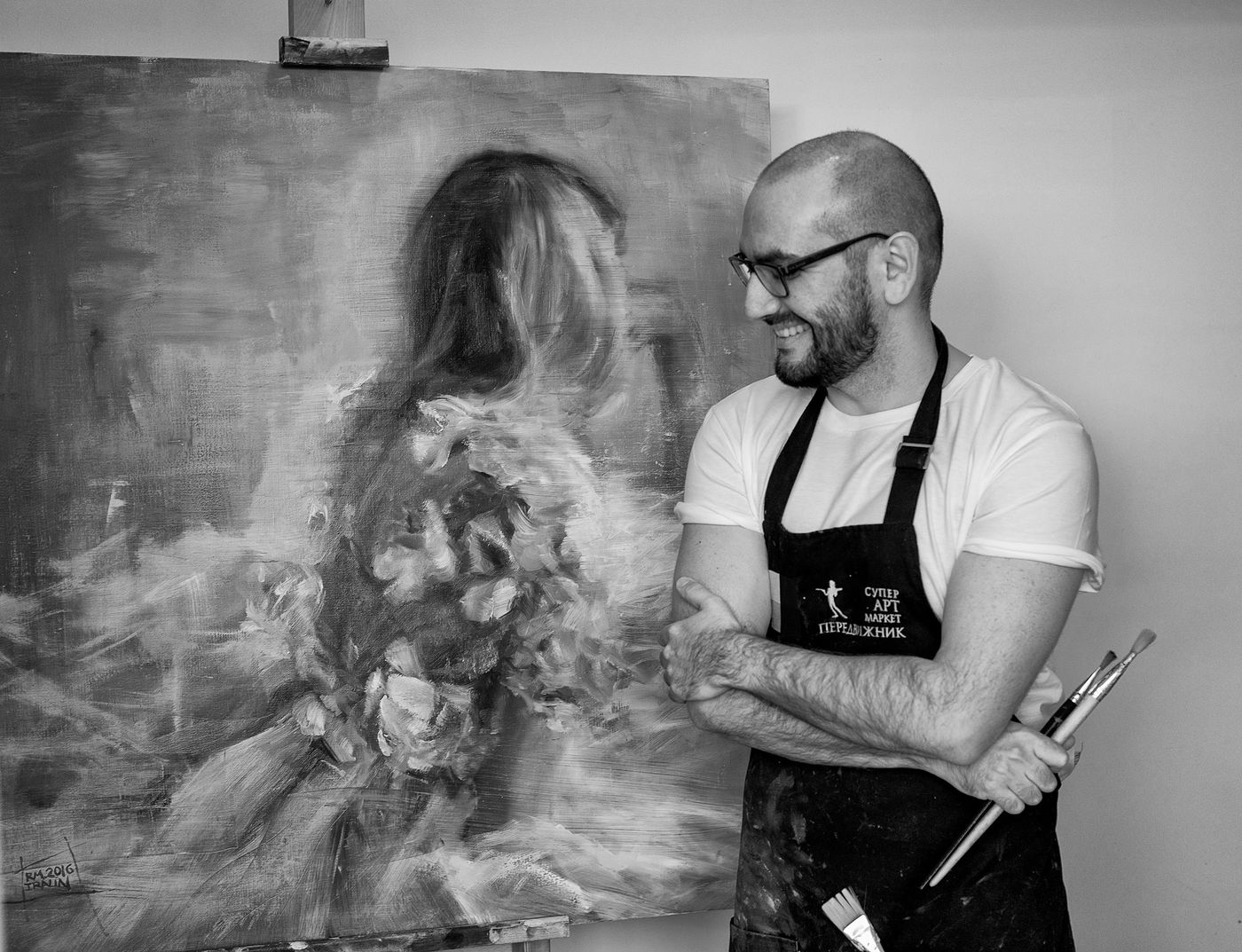
Photo © Rustam Iralin.
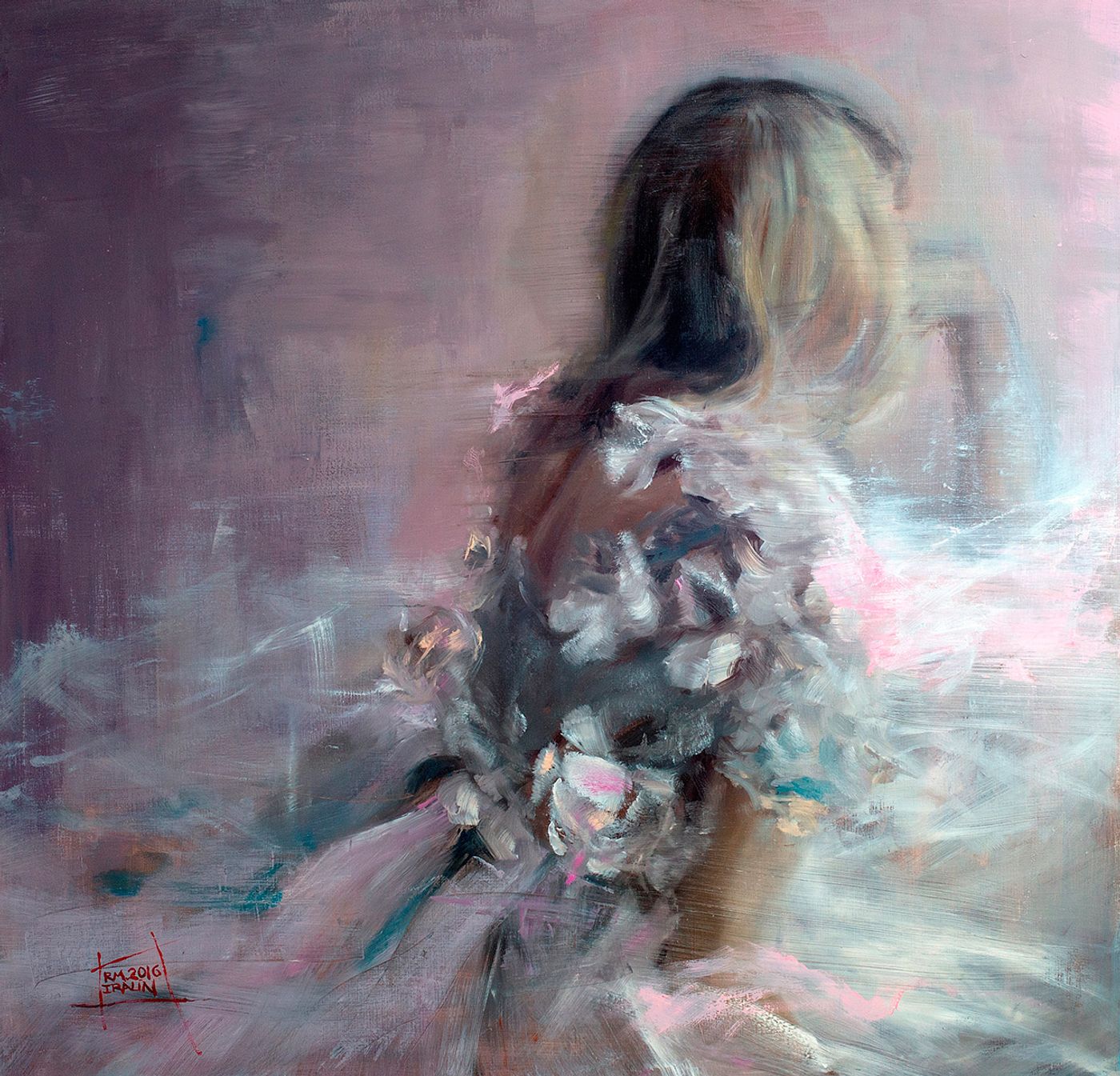
© Rustam Iralin.
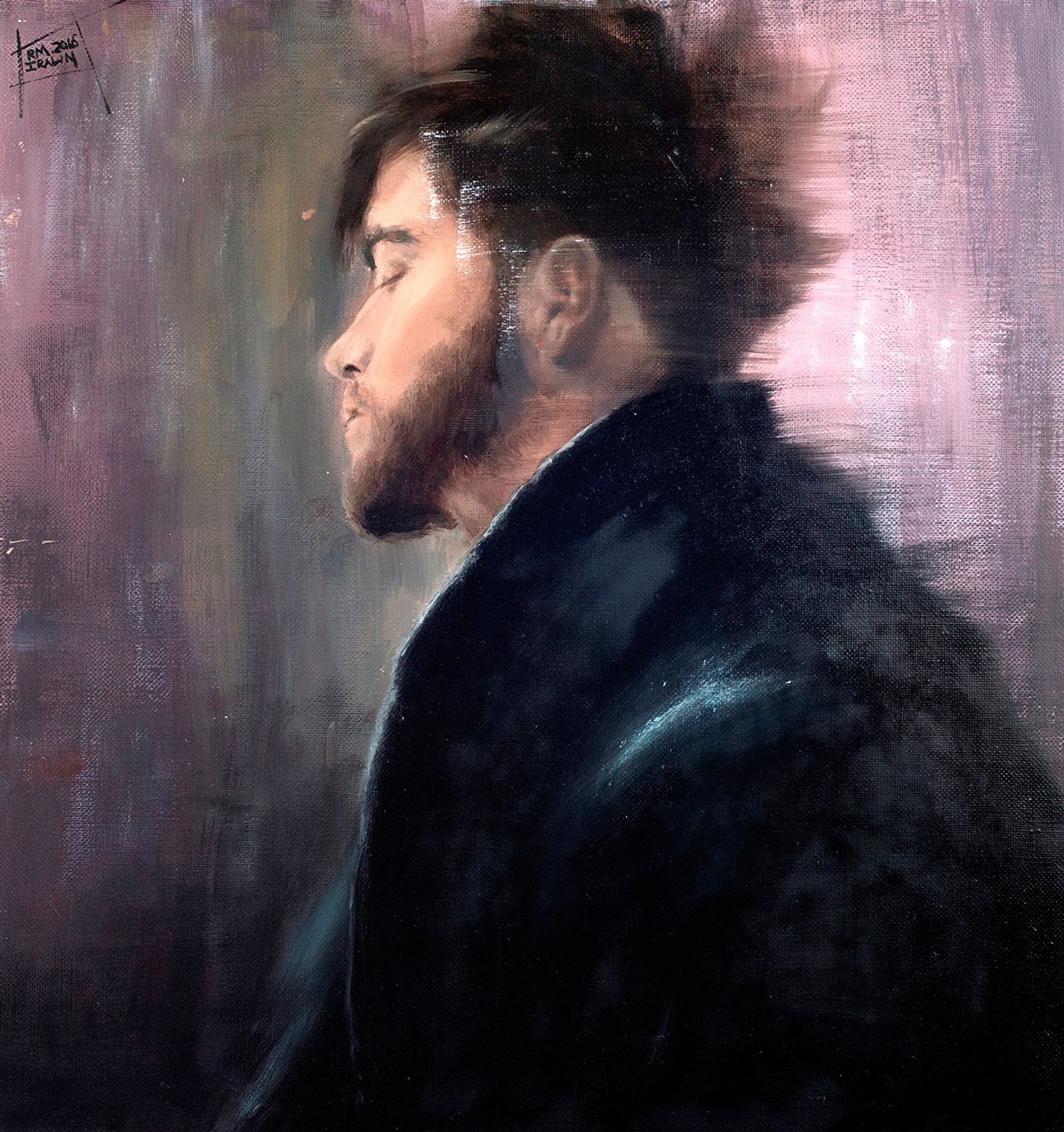
Rustam Iralin, Portrait of a Young Man, 2016, 80 x 80cm, canvas, oil.
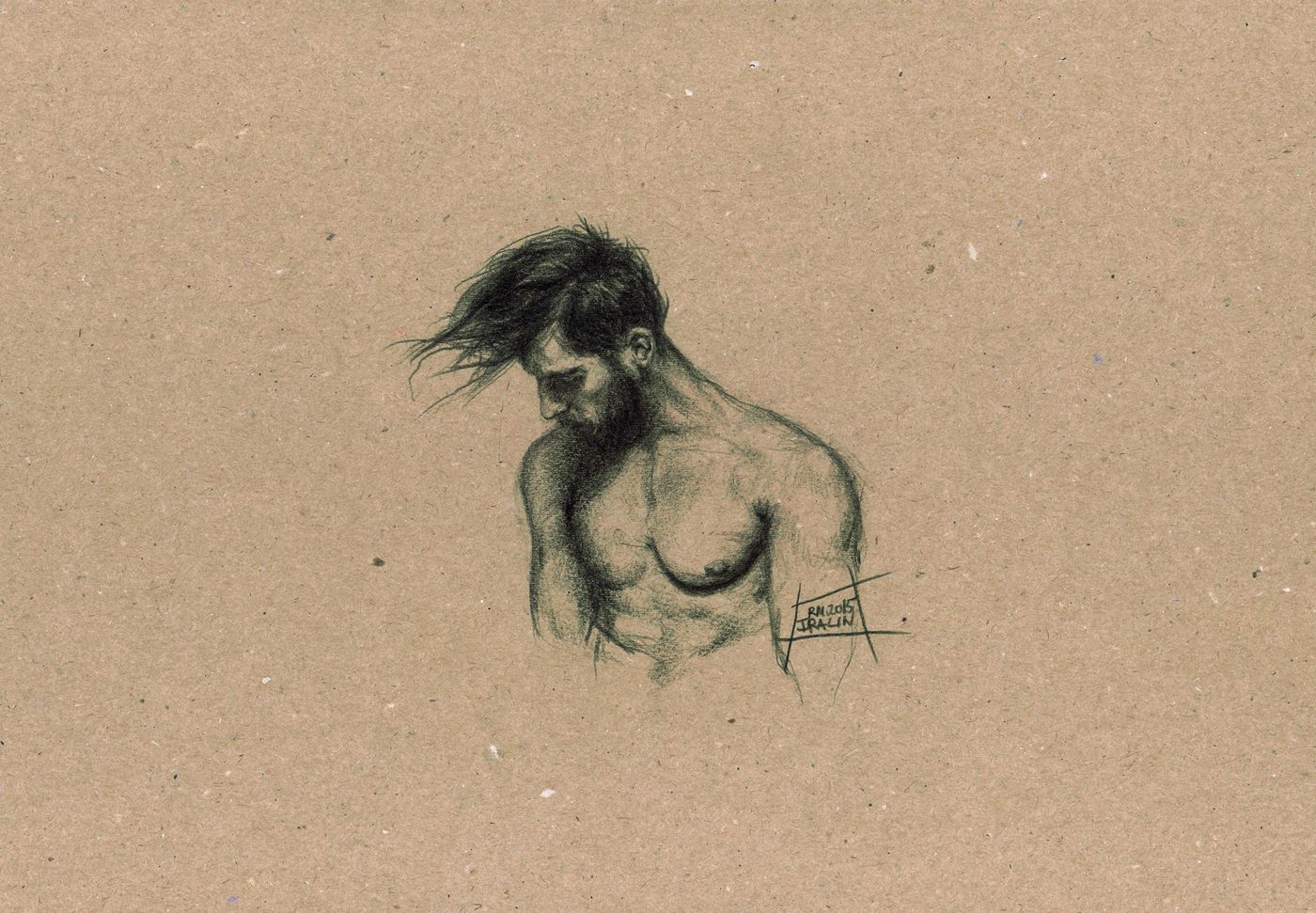
Rustam Iralin, Harmony inside: drawing 1, 2015, A4, pencil on craft paper, framed.
Who are the people in your work? Are they friends and acquaintances or figments of your imagination? Do they pose for you or do you work from photographs or memory?
Mostly they are all from my imagination. As an artist I do a lot of research and I love investigating people: their hair, eyes, the way they look and the way they move. All these little pieces make up a great portrait in my head which I end up putting on paper. Sometimes, people send me their photograph with a specific emotion or pose and I go from there. I don’t like "copying" the image from the photograph that they send me preferring instead to add something special to the image to make the story more interesting. I still receive a lot of requests from people who want me to paint or draw their portrait, and I always ask them to really think about whether they want to see their finished portrait on the wall every single day. It’s important to understand and accept that.
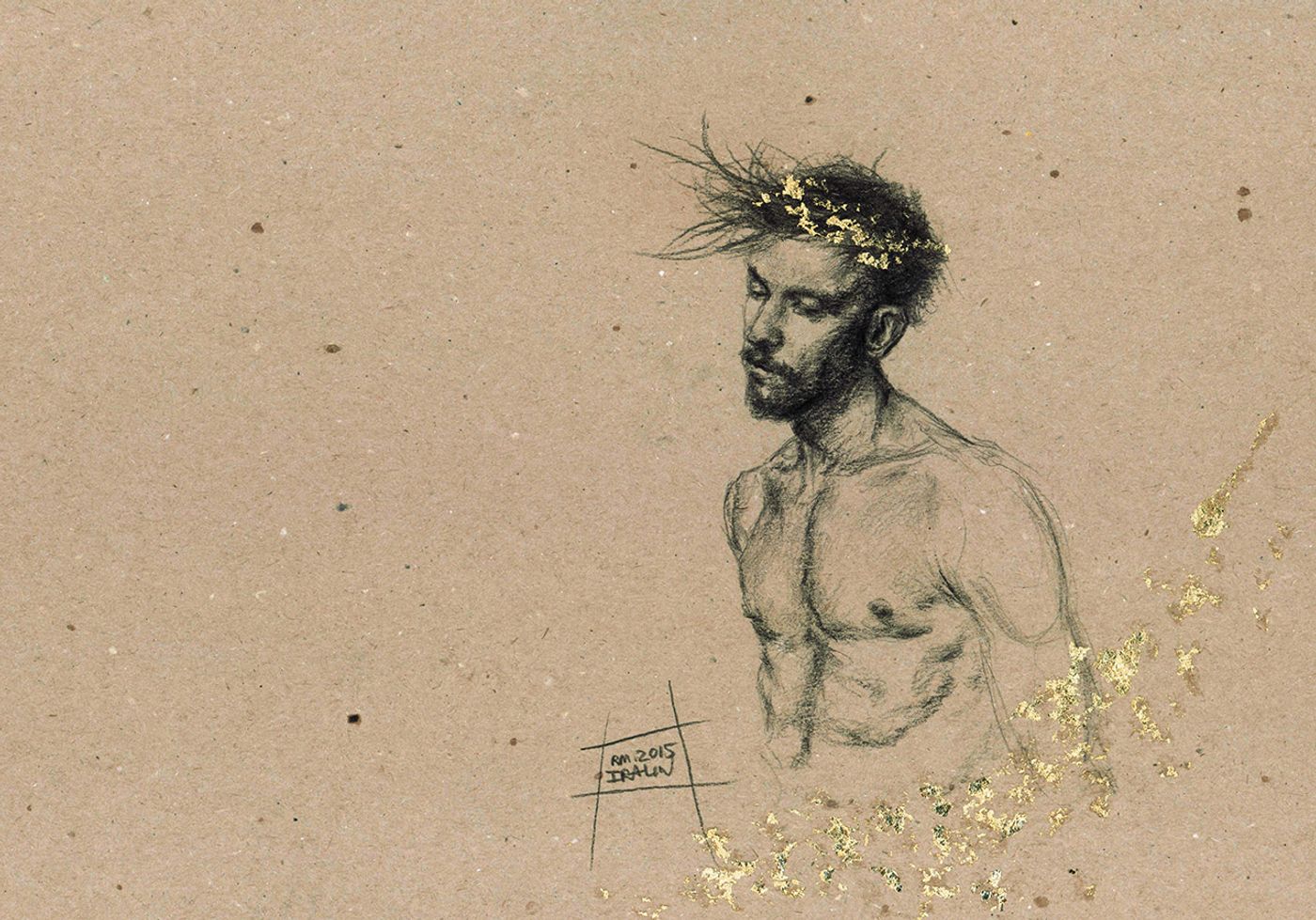
Rustam Iralin, The Musician drawing 3, 2016, A4, pencil on craft paper, framed.
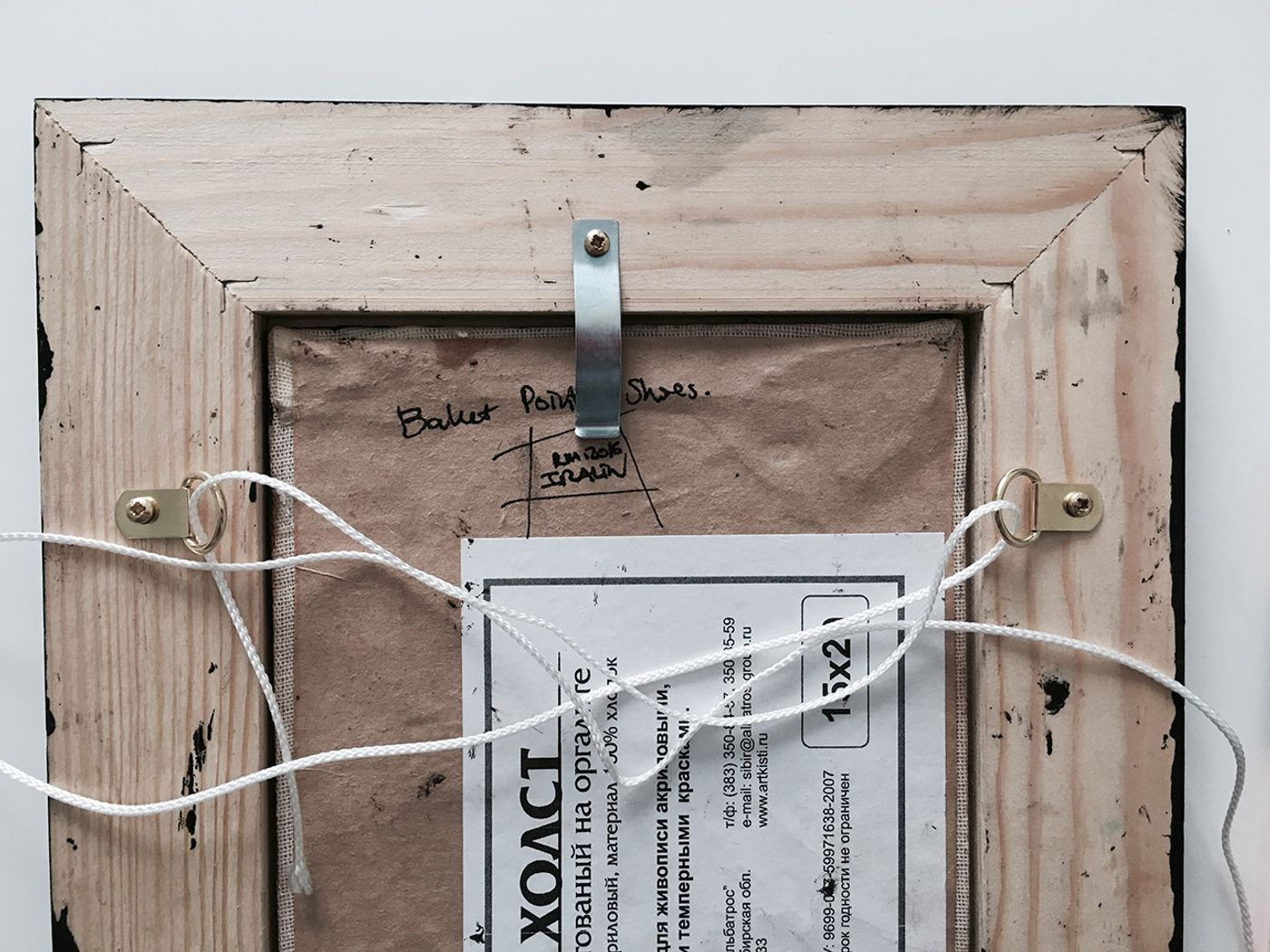
Photo © Rustam Iralin.
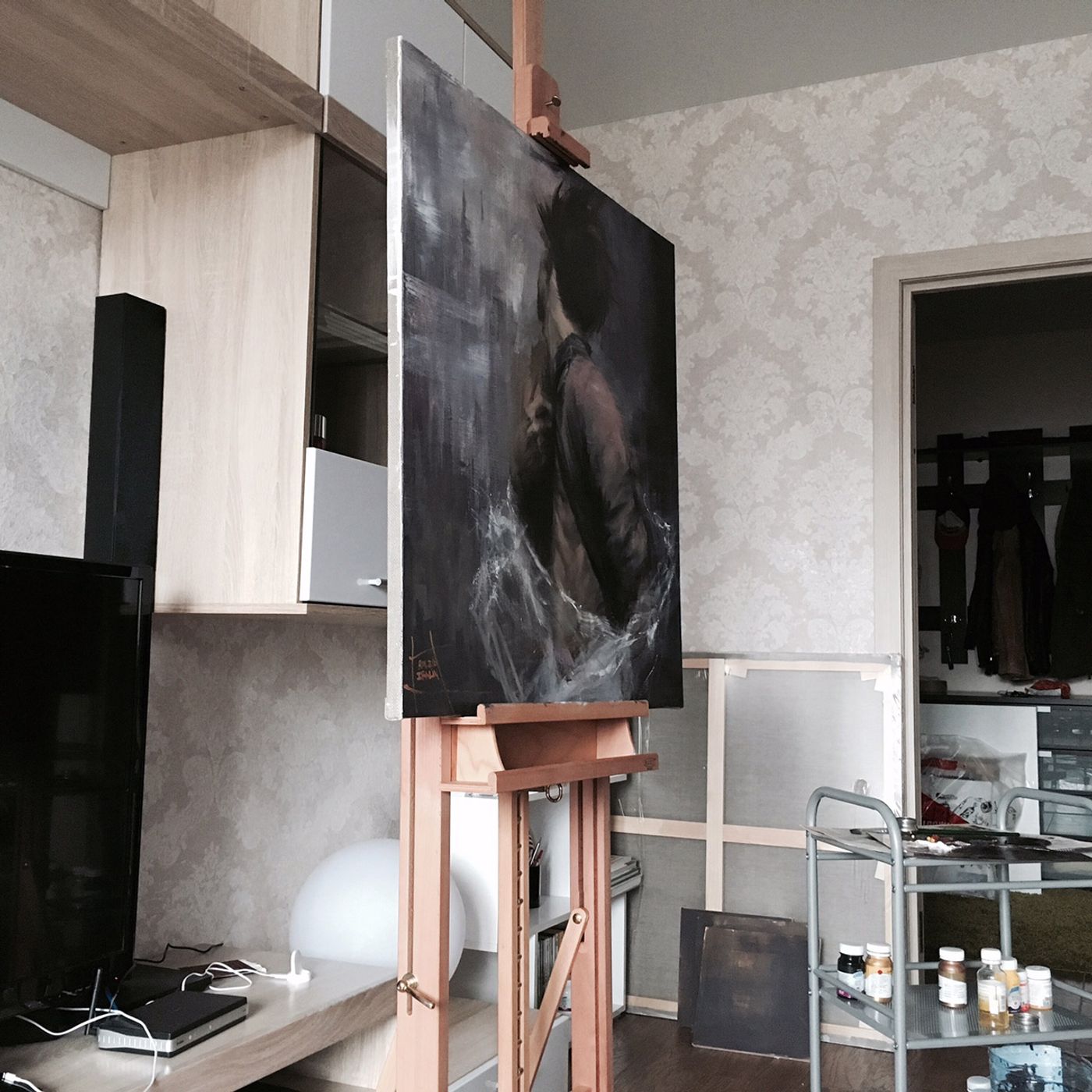
The Slap (making of), 2016, 80x80cm, canvas, oil © Rustam Iralin.
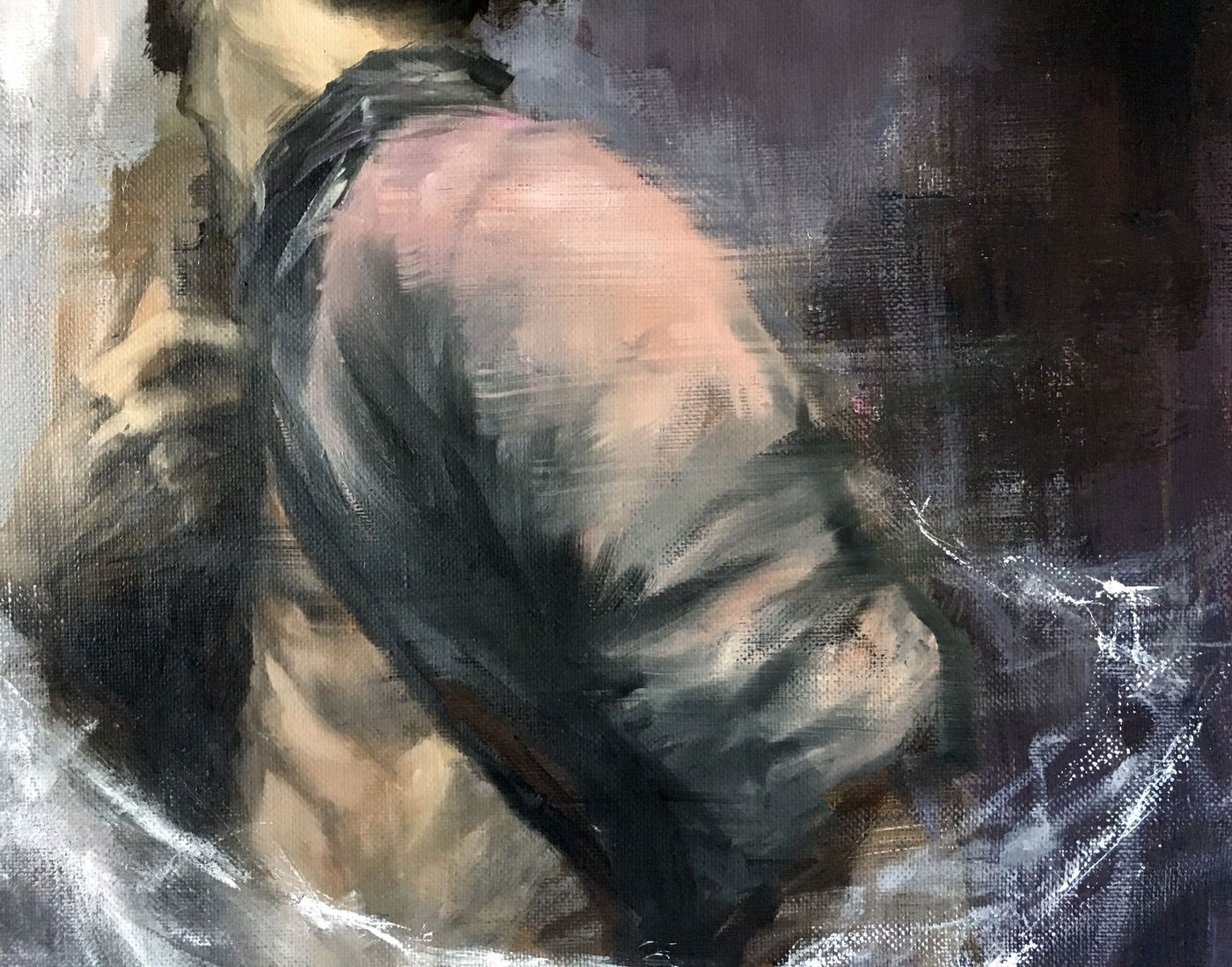
Two recurring subjects you are drawn to are ballet dancers and male figures. What is the significance of each one for you?
Oh yes, ballet is my passion and dancers are the ones who put in all the effort, so I feel both their strength and their beauty. I see ballet dancers like most people do but my main goal is not just to draw these talented people, their physics, bodies or costumes. My goal is to also show what they experience in real life and reflect that into the artwork, so that people can feel their pain, drama, extreme joy or whatever else they experience.
Usually, ballet dancers in my work are female figures because although they have worked very hard throughout many years of their training they are, at the same time, very fragile, which make us believe ballet is so easy.Male figures are preferable when it comes to drawing the dynamics of body muscles. Not everyone wants to look at a very muscular woman in a painting, so male figures are the best choice. I like the way the light covers the male body’s muscles and dances together with dark shadows bringing great volume to the drawing and making it more realistic.
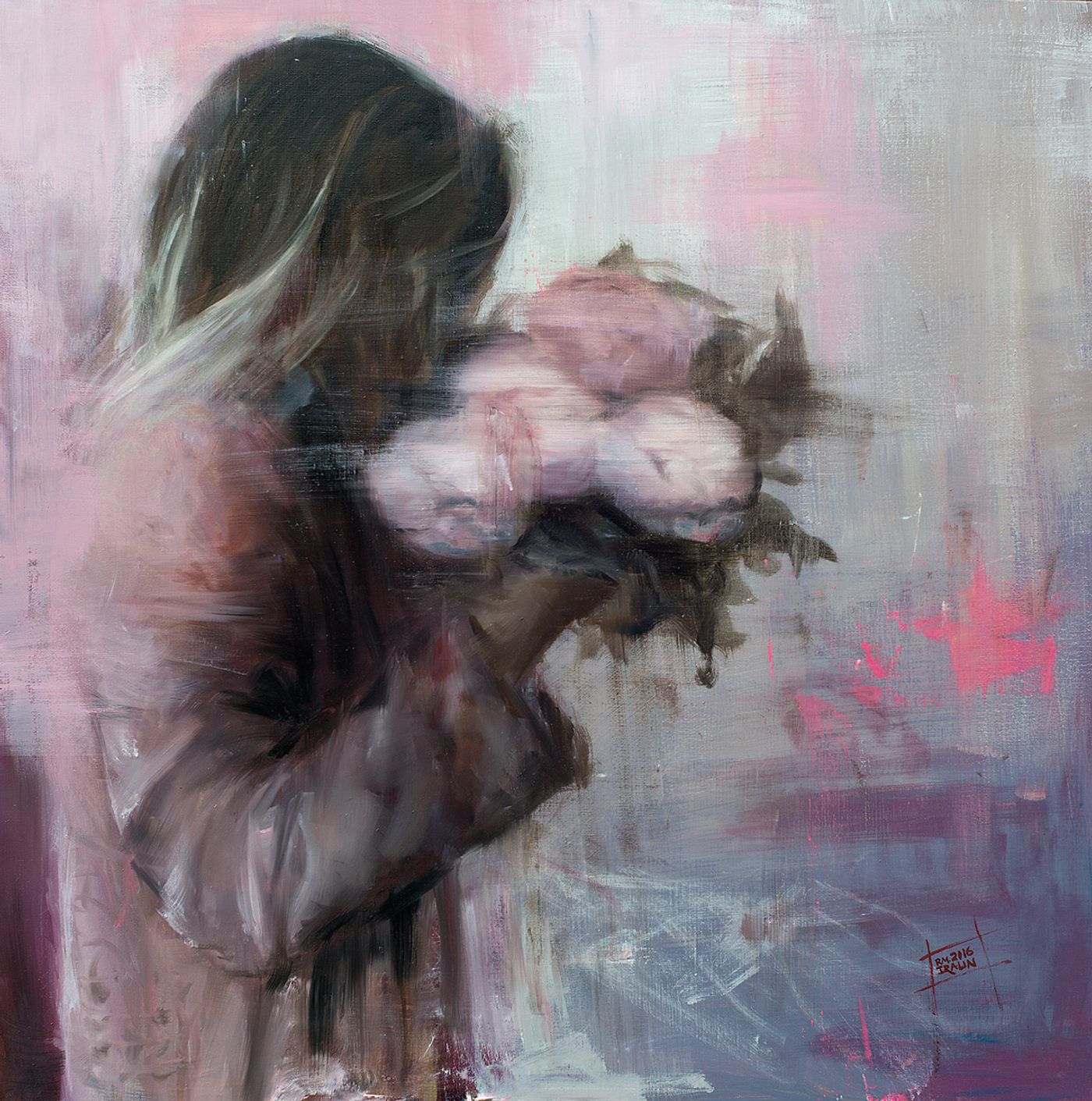
© Rustam Iralin.
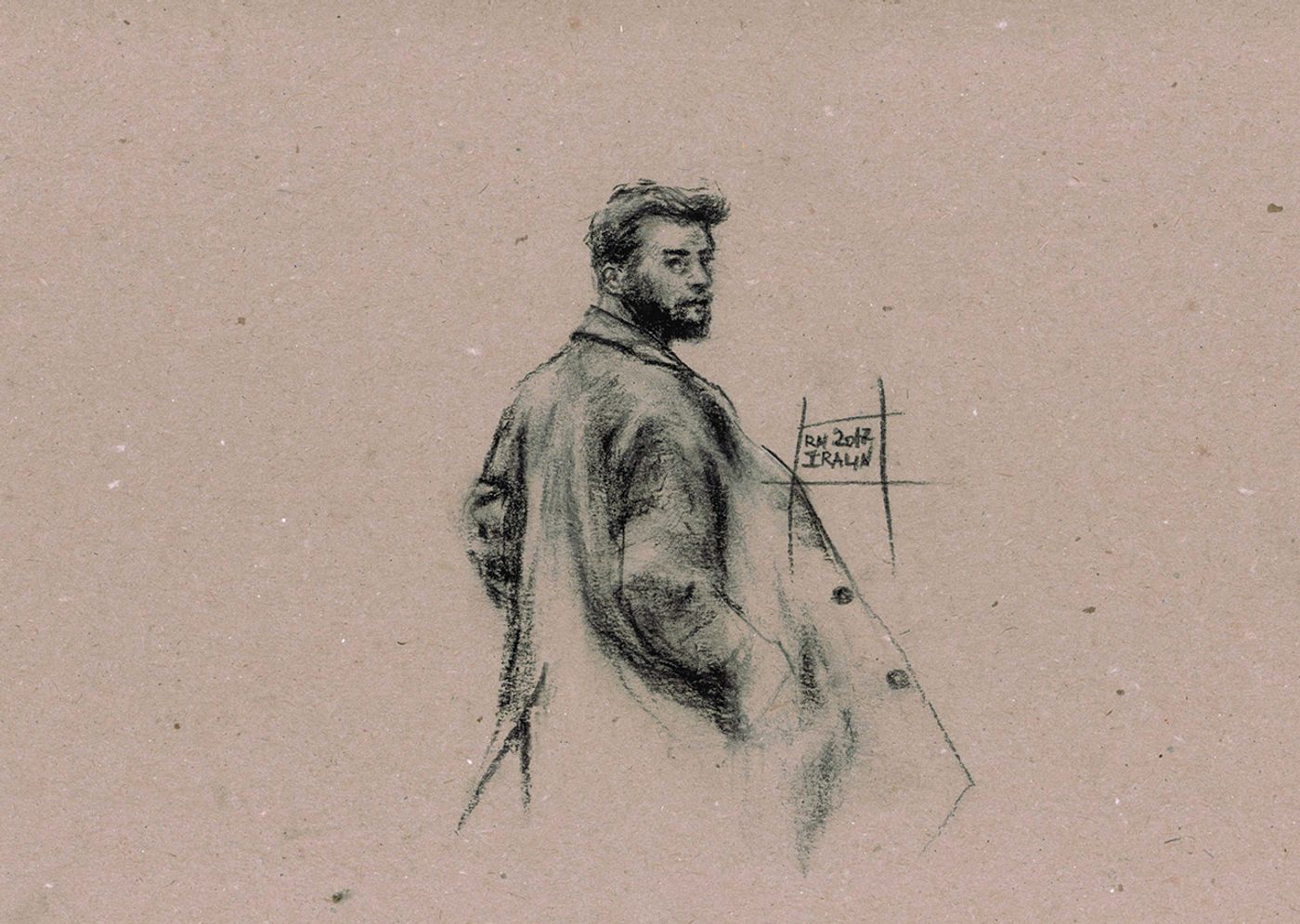
Rustam Iralin, Portrait of man in coat, 2017, A4, pencil on craft paper.
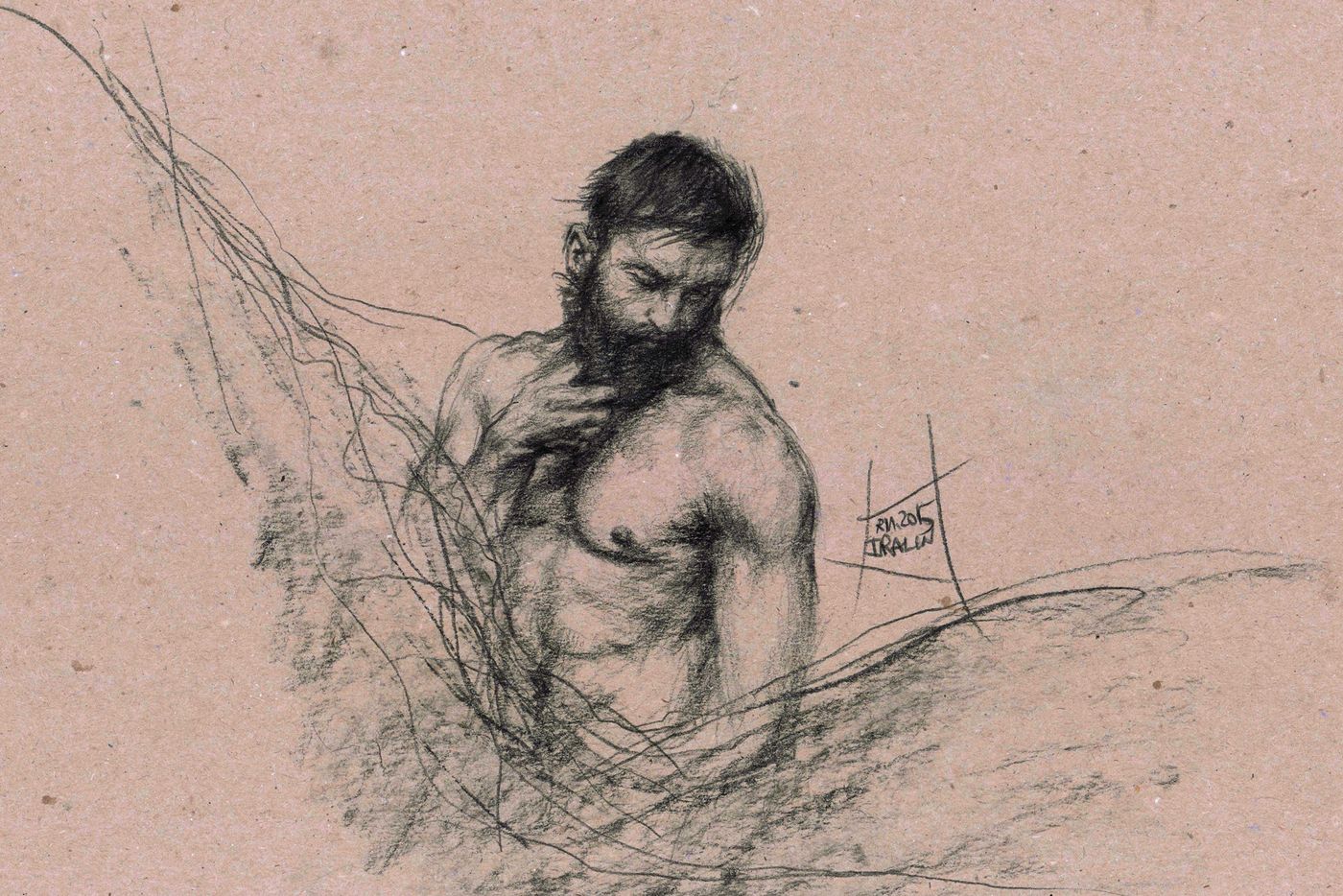
© Rustam Iralin.
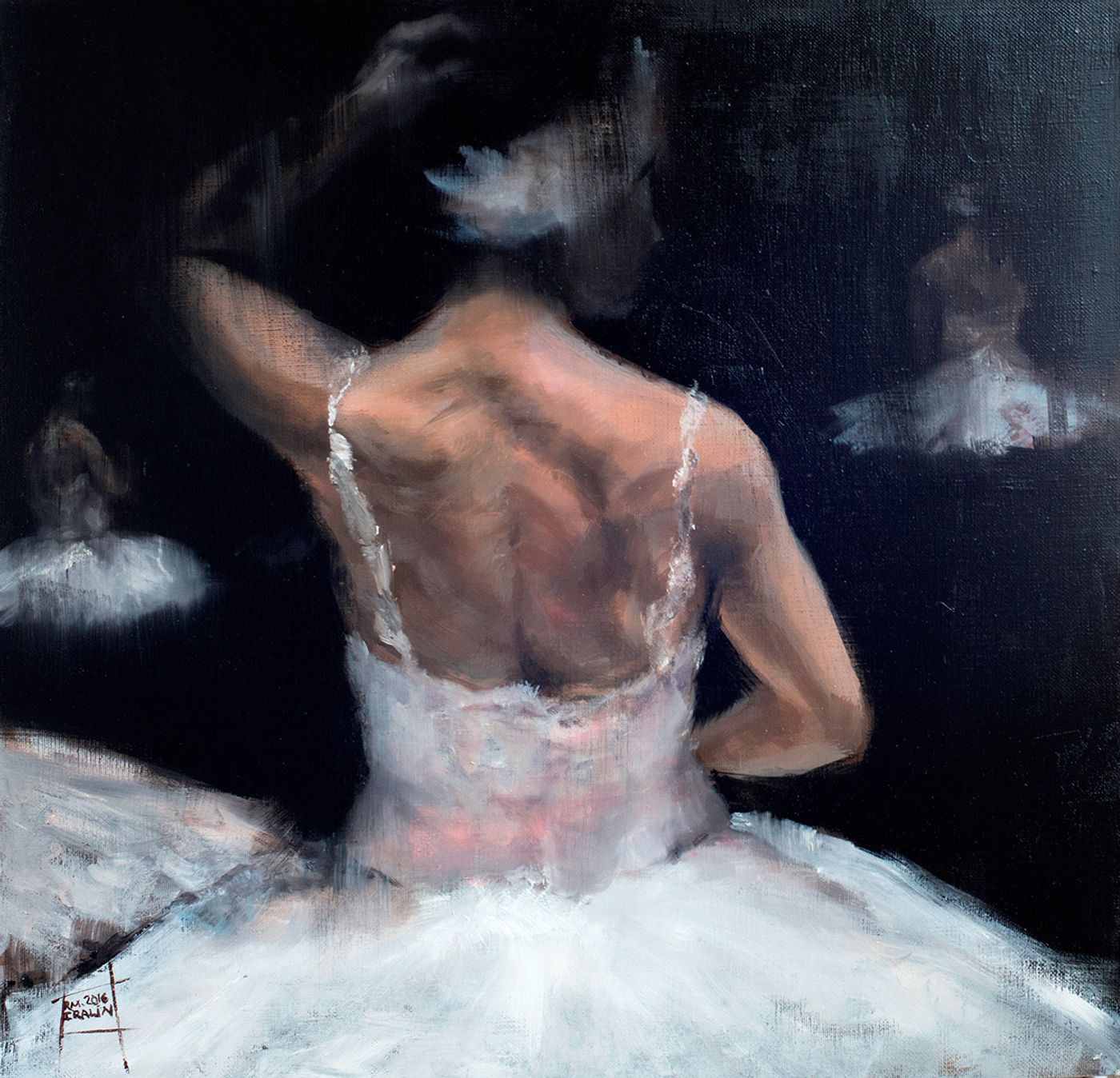
Rustam Iralin, The Backstage, 2016, 70x70cm, canvas, oil.
Your work, both compositionally and tonally, is infused with Romanticism, tiptoeing between reality and the fantasy. Do you consider yourself a romantic and what is your frame of mind when you work in your studio?
I am a romantic person, it’s true. My whole life is filled with Romanticism but it is not like a fantasy fairy tale, it is more like drama. So I consider myself a dramatic artist who draws real life, real people before adding a beautiful wrapping at the end. When I paint in my studio, I never start without there being lounge or soundtrack music in the background. For example, when painting my series of ballet female dancers, Tchaikovsky was always on my playlist. It helped to create a good atmosphere allowing me to become one of those dancers for a couple of hours whilst I drew.
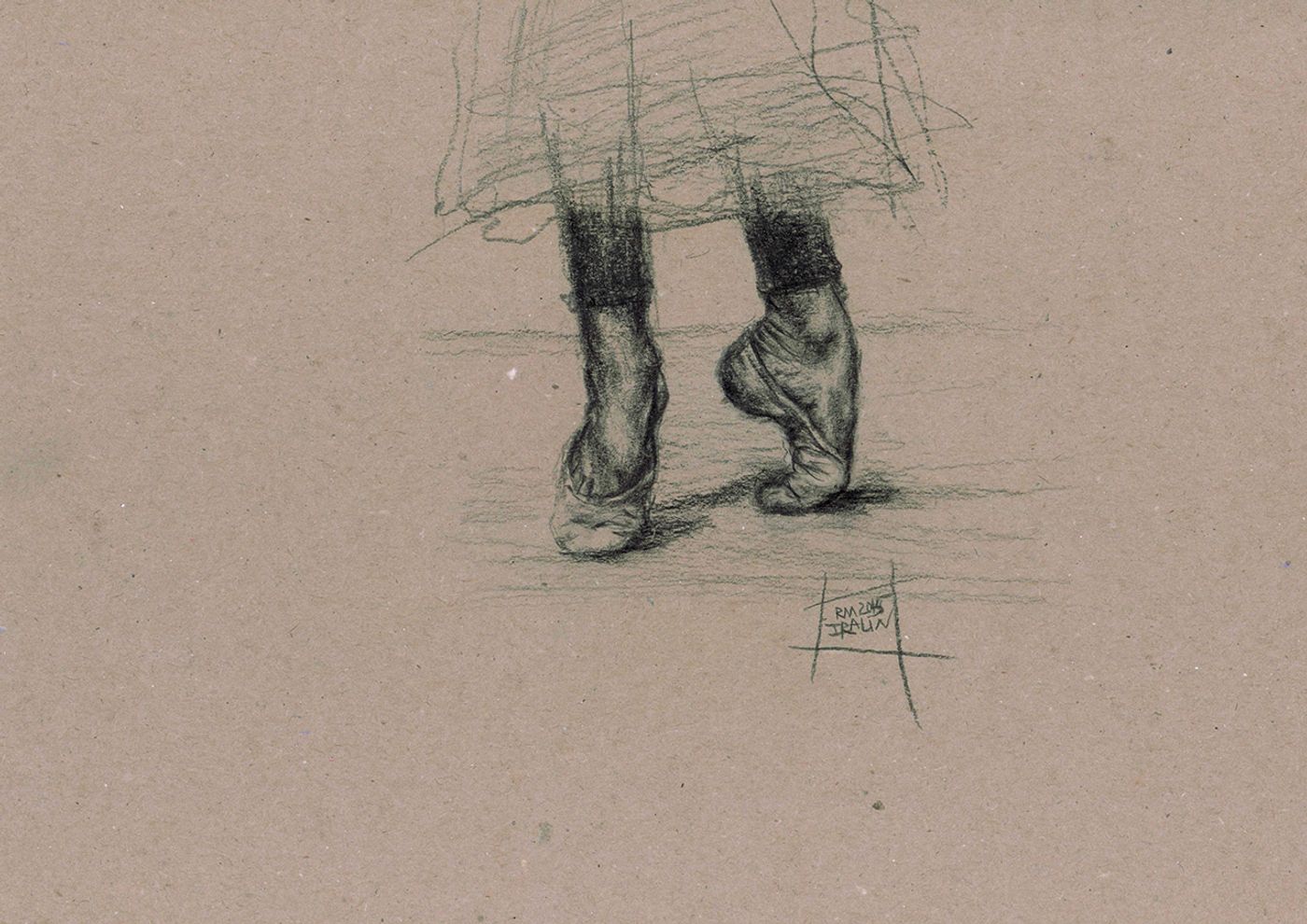
Rustam Iralin, Ballerina drawing 3, 2015, A4, pencil on craft paper, framed.

Rustam Iralin, The Rehearsal, 2015, 40x40cm, canvas, oil.

Rustam Iralin, The Rehearsal, 2015, 40x40cm, canvas, oil.
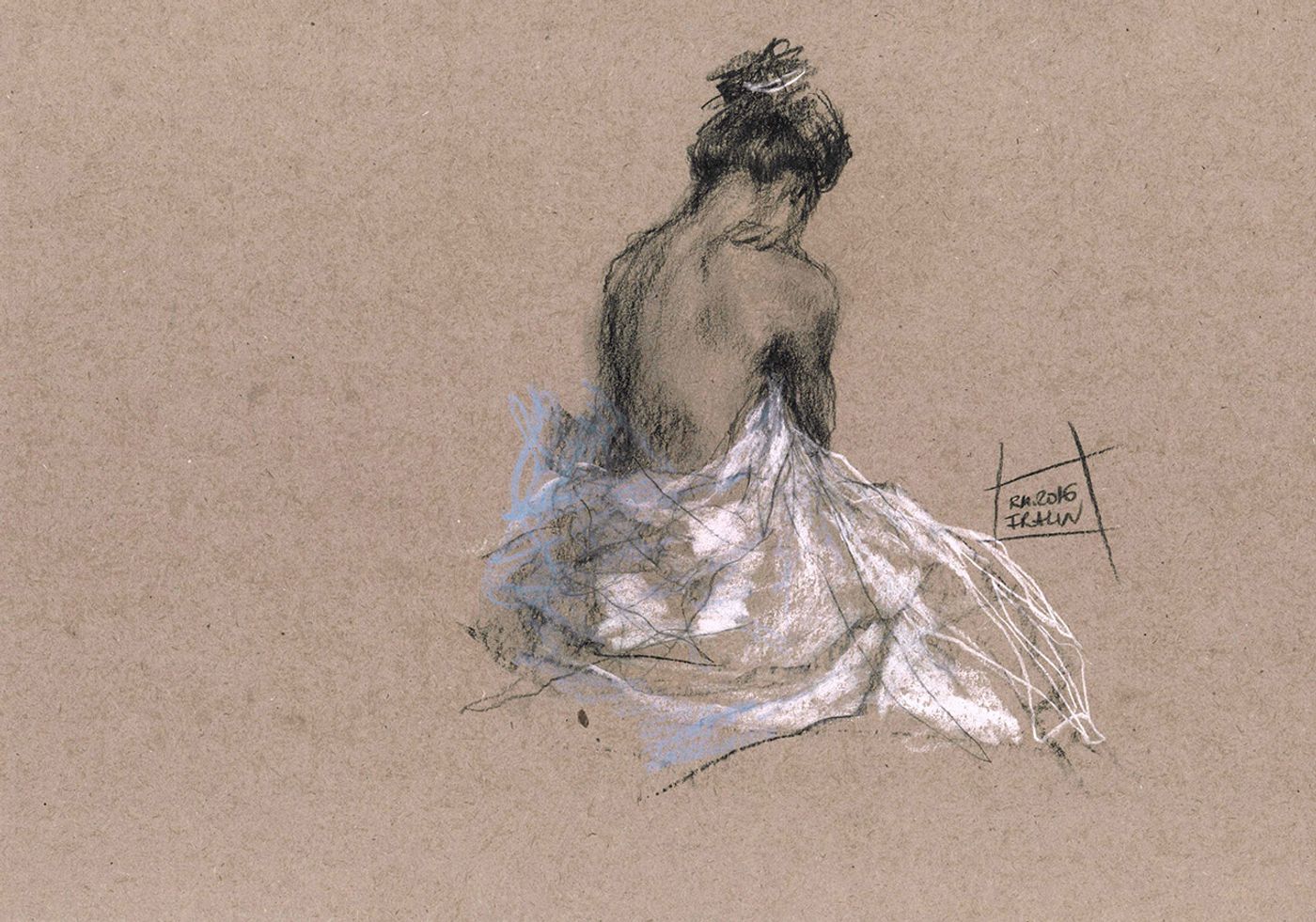
Rustam Iralin, The Muse drawing 1, 2015, A4, pencil on craft paper, framed.
How has the rise of the digital age affected traditional forms of art like painting and drawing in your experience?
It has affected it in many ways. On the one hand, digital tools like cameras or laptops with graphics software lighten the hard work: I can use a camera to quickly capture the image and then reproduce it with the lights and colors that I needed at the moment I took the shot. Software also helps adjust the colors or adds elements to the composition so I can see if they fit.
On the other hand, people today seem to have lost the understanding of what real artwork is. They get accustomed to good quality, realistic photography and they think that real artwork should look more or less the same. I would encourage everyone to appreciate the work of painters and photographers separately without grouping them together.
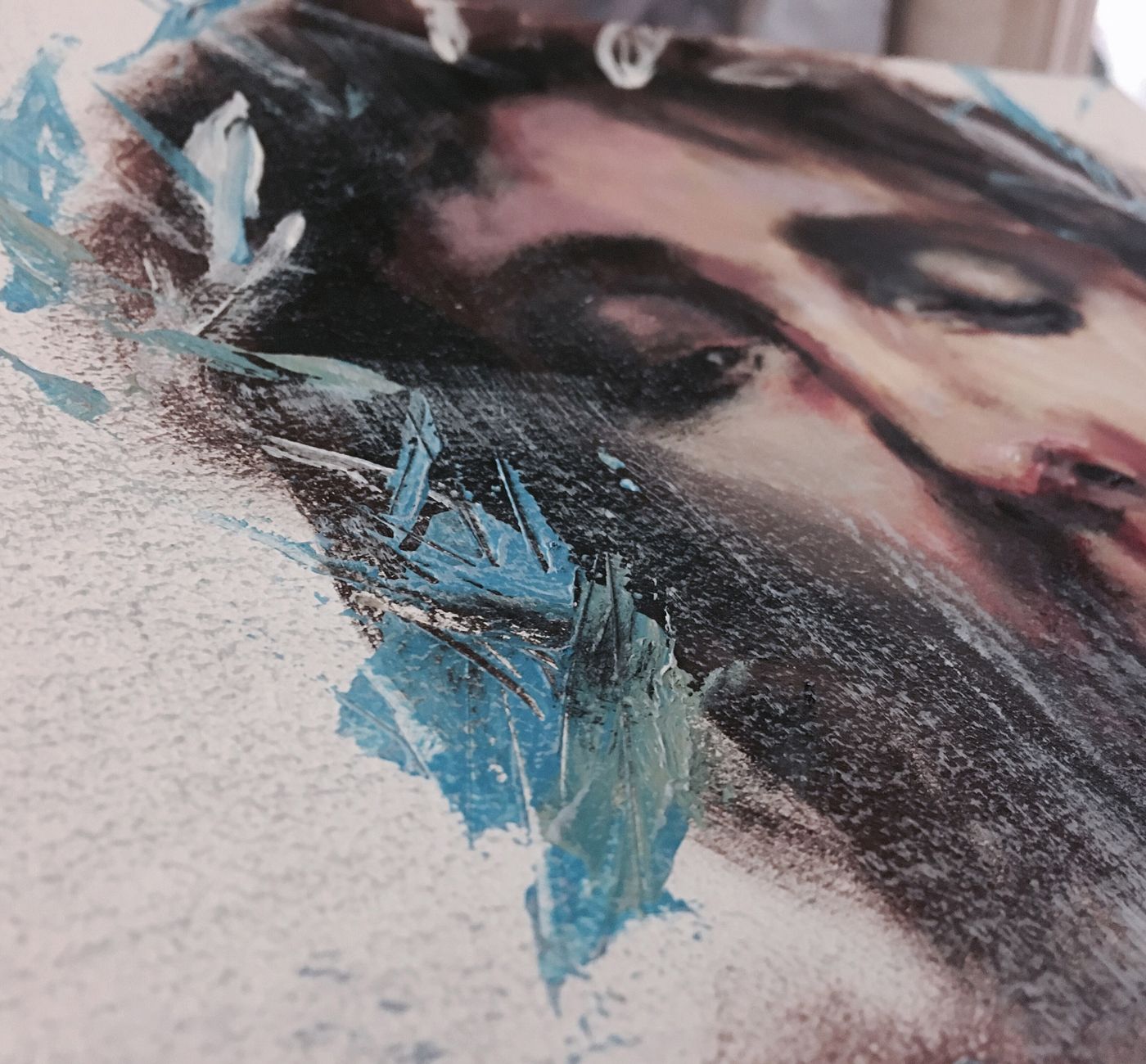
Photo © Rustam Iralin.

Photo © Rustam Iralin.
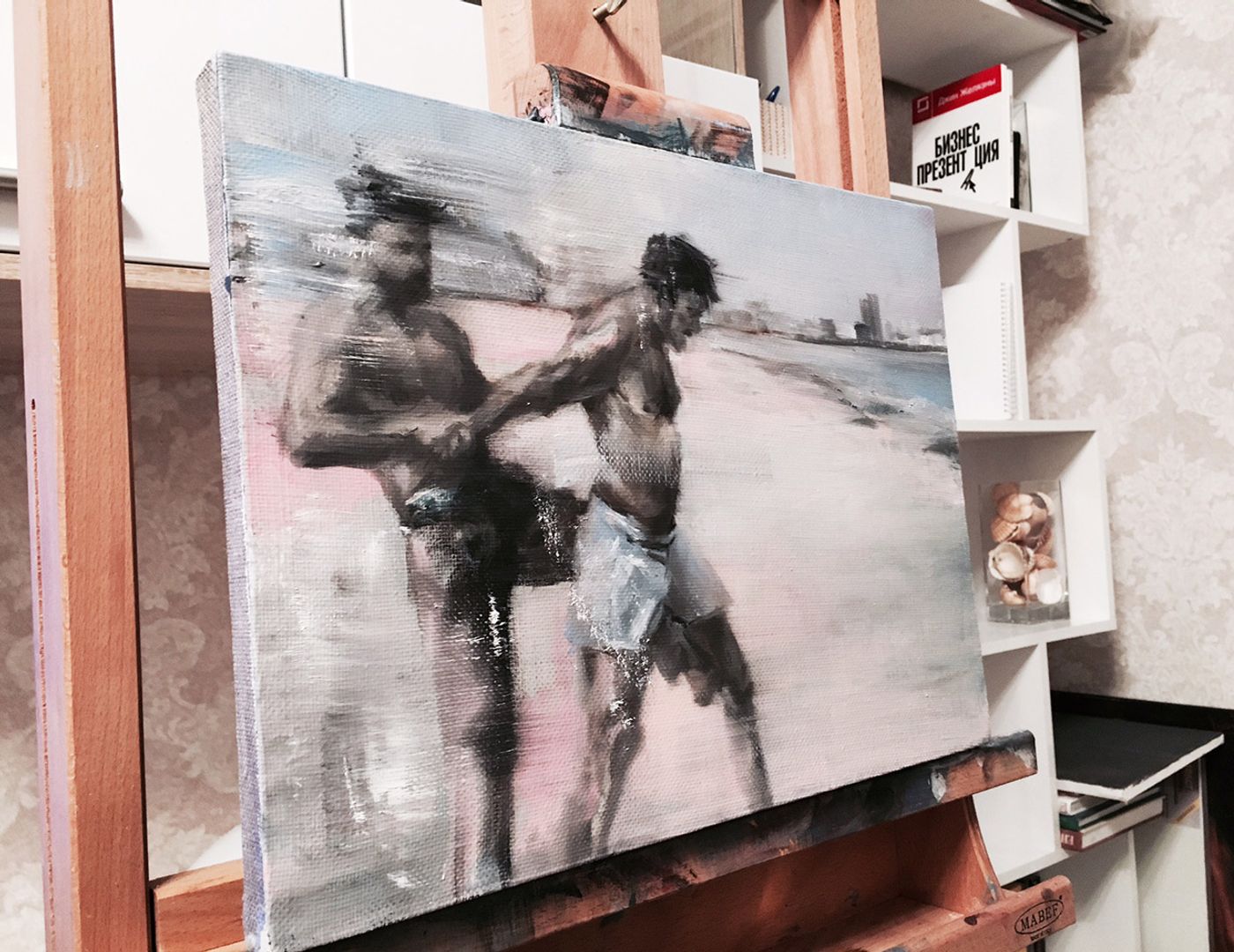
Photo © Rustam Iralin.
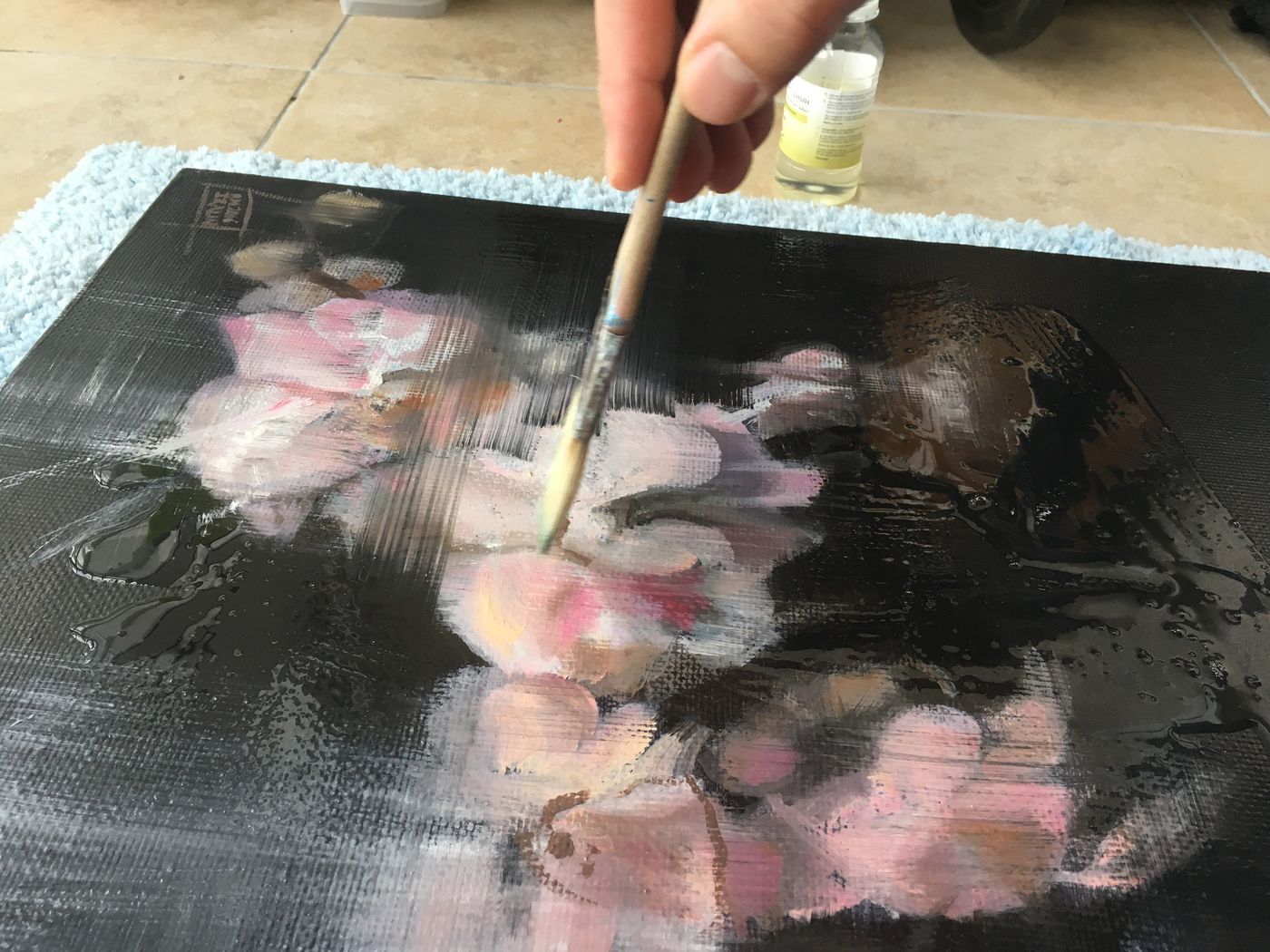
Photo © Rustam Iralin.
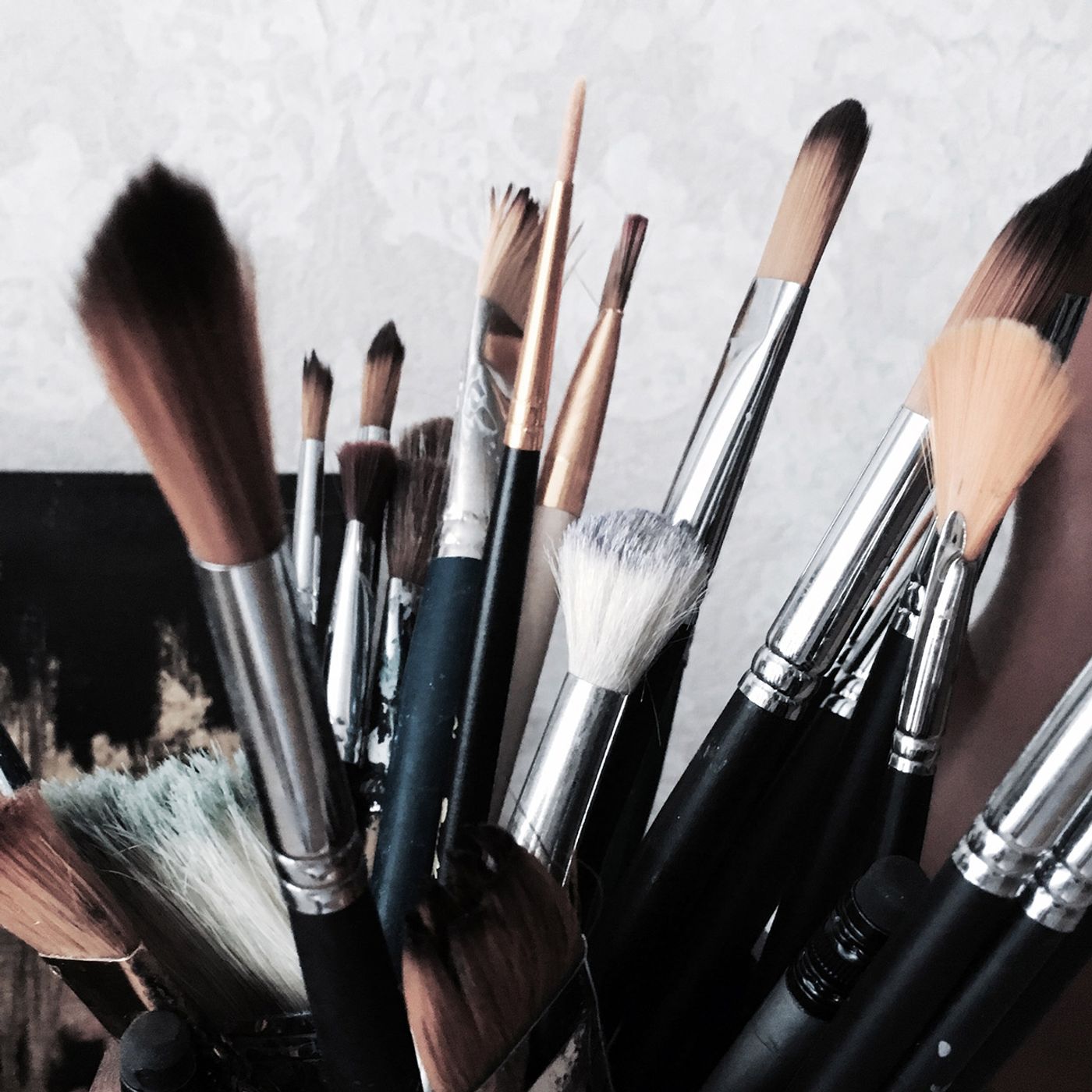
Photo © Rustam Iralin.